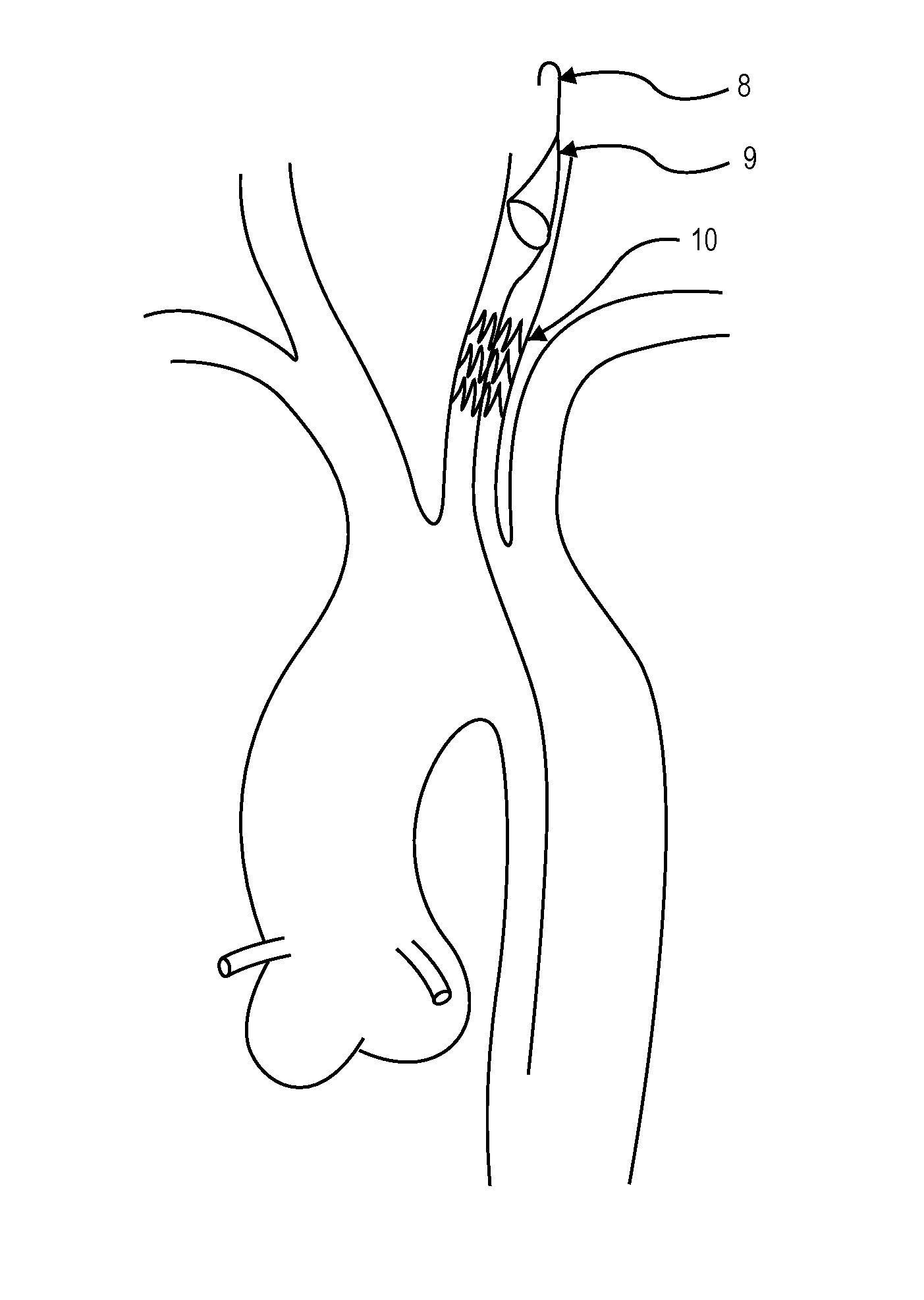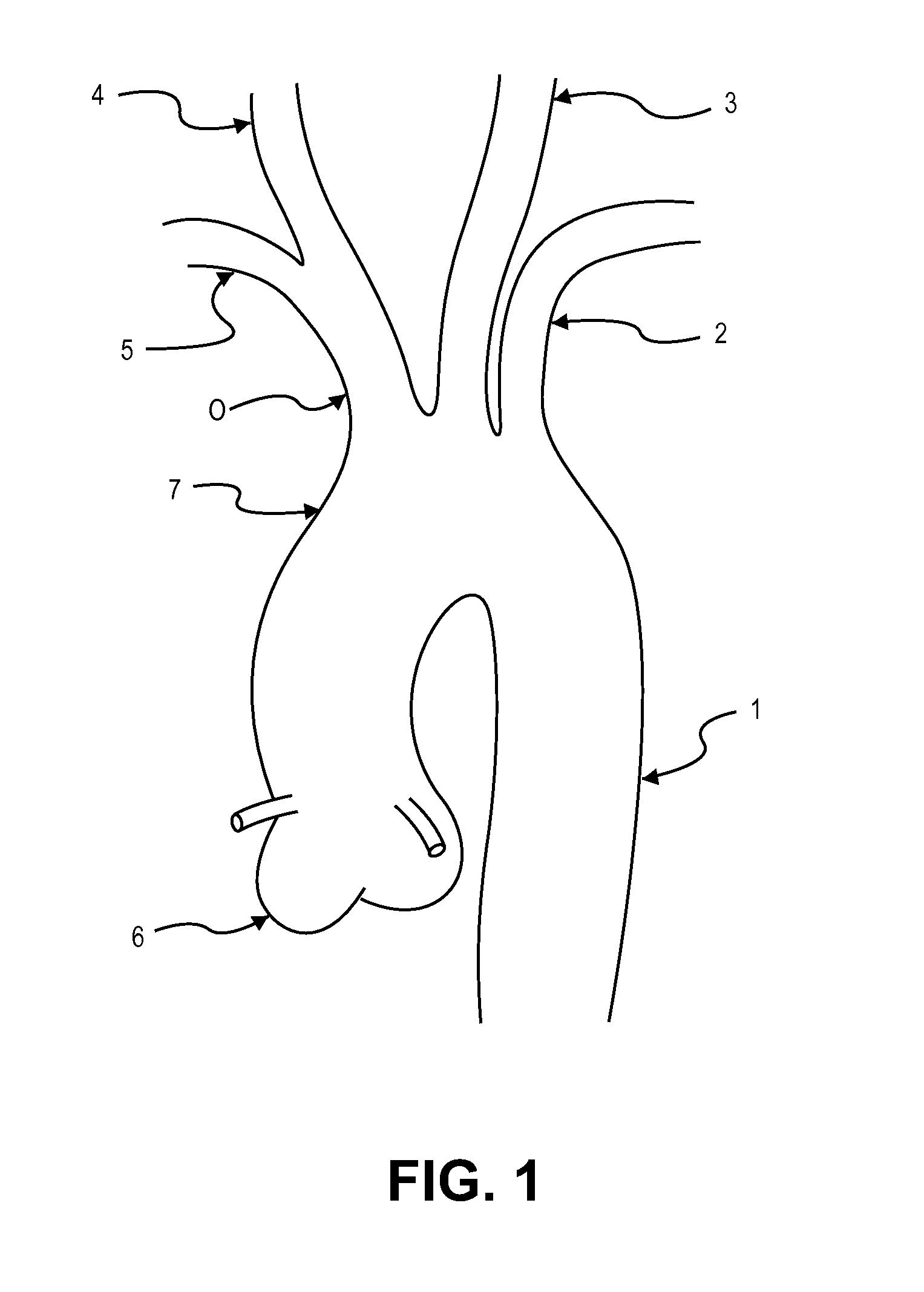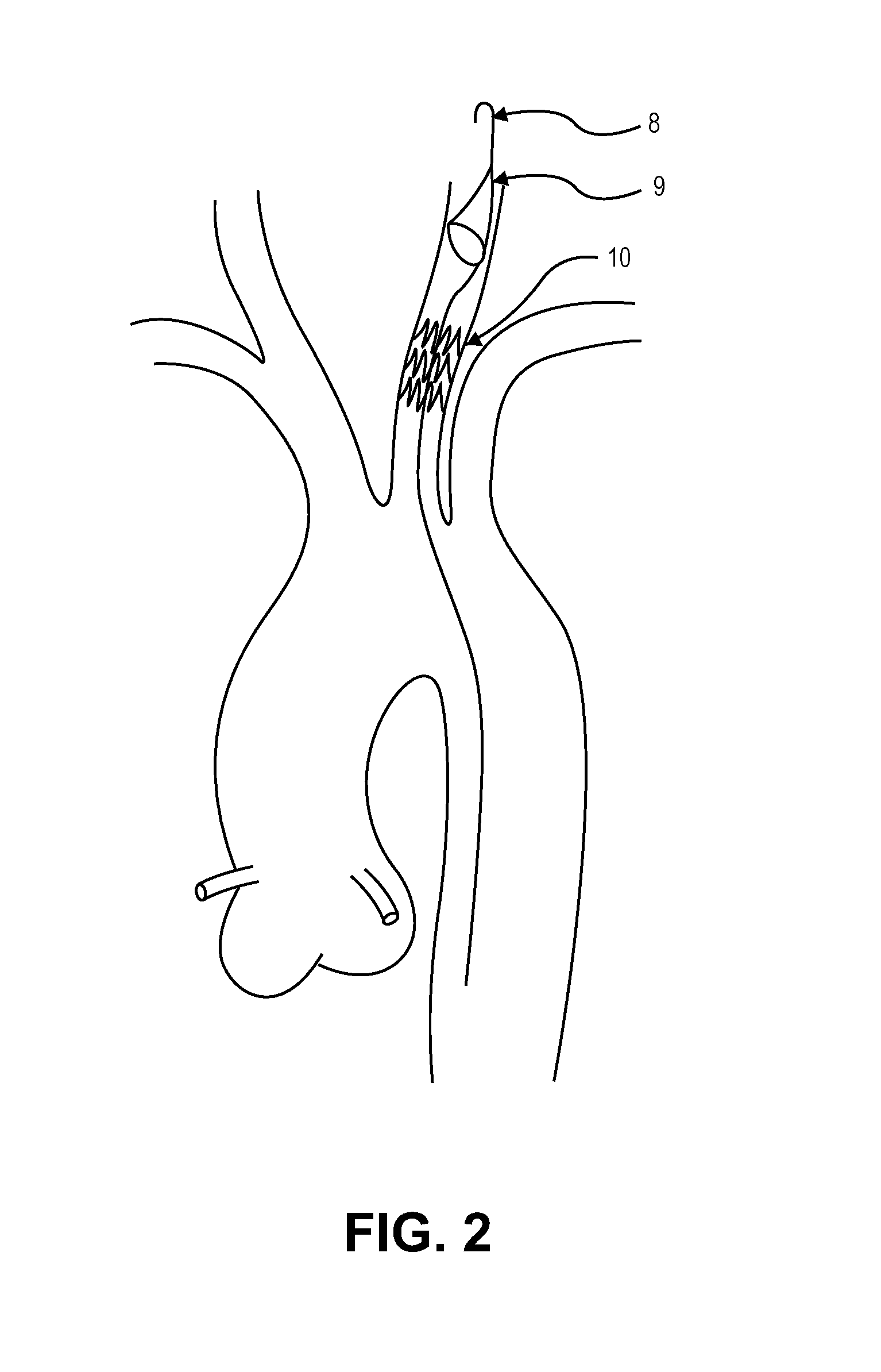Illuminated Intravascular Blood Filter
a technology of intravascular blood filter and light source, which is applied in the field of medical devices, can solve the problems of increasing the cost of hospital and patient, increasing the complexity of the procedure, and affecting the quality of life of the surrounding tissue, so as to limit the possibility of entanglement
- Summary
- Abstract
- Description
- Claims
- Application Information
AI Technical Summary
Benefits of technology
Problems solved by technology
Method used
Image
Examples
Embodiment Construction
[0052]The invention described herein is an intravascular filter introduced to the aorta at or near the aortic cannulation site. The device would be illuminated for guidance and have a relatively short overall length (10 to 40 cm). Any of the common intravascular filter devices could be used to complete the filtration of the blood but would need to have an illumination of some portion to guide the delivery to the carotid vessels. Introduced through a purse-string suture, the devices would measure about 1 to 4 millimeters in diameter and be delivered through a 5 or 6 French introducer over a guidewire where the introduction site would be the same as the cannula introduction site between the purse string sutures. Sheathed in a delivery catheter the filters would be exposed to the vessel in a collapsed state and advanced out the end of the delivery catheter where they would expand either passively by a memory metal such as Nitinol or actively by a balloon expansion or other radial force...
PUM
 Login to View More
Login to View More Abstract
Description
Claims
Application Information
 Login to View More
Login to View More - R&D
- Intellectual Property
- Life Sciences
- Materials
- Tech Scout
- Unparalleled Data Quality
- Higher Quality Content
- 60% Fewer Hallucinations
Browse by: Latest US Patents, China's latest patents, Technical Efficacy Thesaurus, Application Domain, Technology Topic, Popular Technical Reports.
© 2025 PatSnap. All rights reserved.Legal|Privacy policy|Modern Slavery Act Transparency Statement|Sitemap|About US| Contact US: help@patsnap.com



